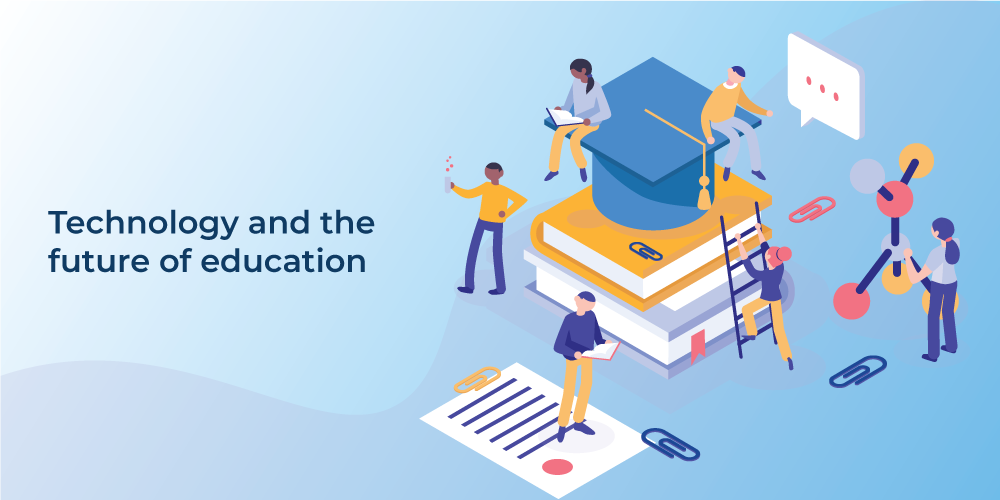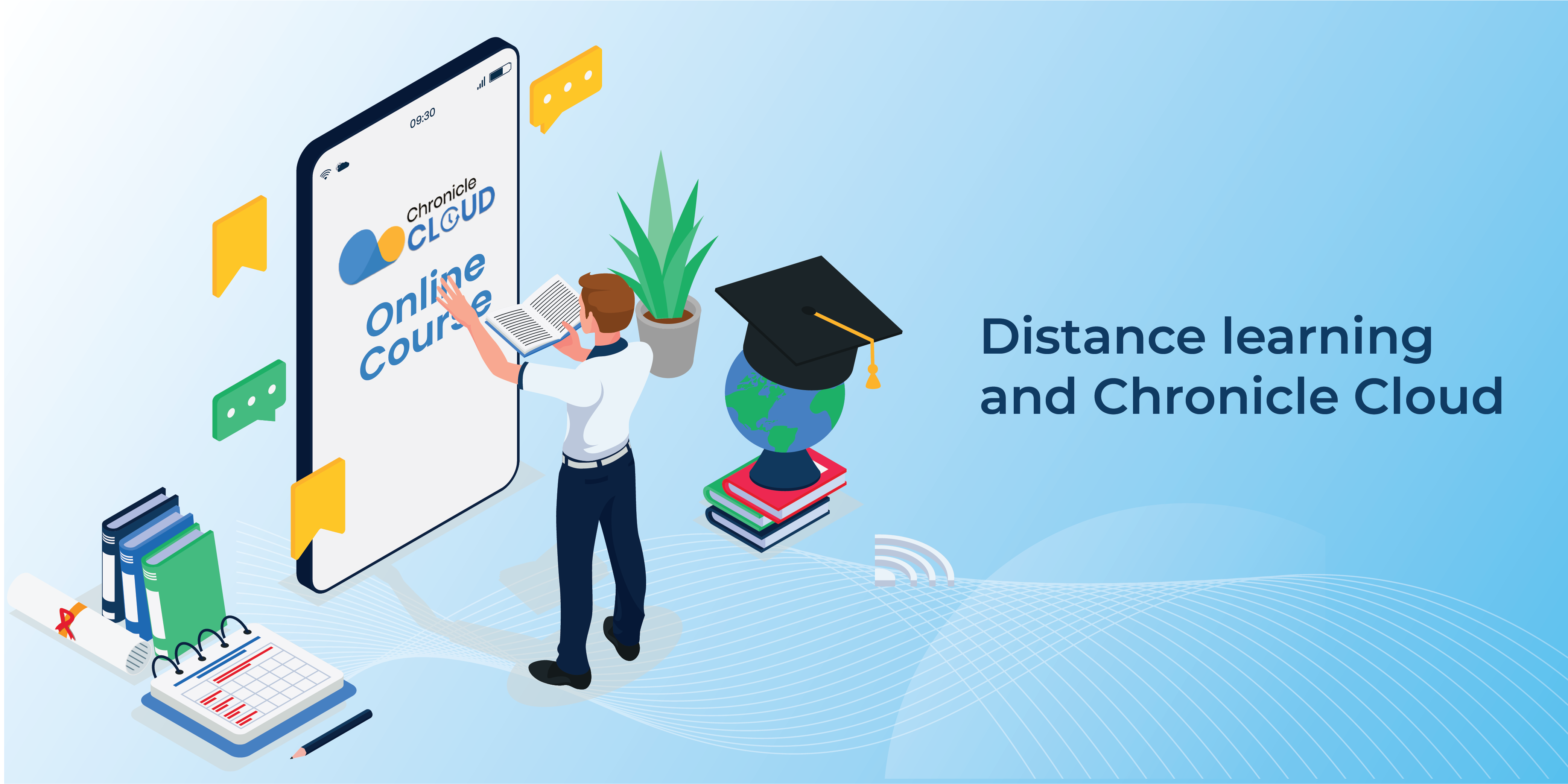Distance Learning
Rachel had a scheduling conflict. She needed a personal day in June 2021 but had to help a few students with Math and Science. Pre-pandemic, Rachel would have had to shuffle around. The lockdown helped (without being in a remote situation, Rachel would not have thought of giving technology a try). She logged into Gmeet- the video-conferencing platform, helped the students and collaborated with the class teacher for student feedback.
The school could conduct video meetings before the pandemic but rarely bothered with the technology. That quickly changed when P.S 105, NY, like schools nationwide, pivoted to virtual operations in the autumn of 2020. With students and teachers back in the classroom in 2021, Rachel cannot imagine working without the digital tool. “It was learning born out of necessity,” she says.
School teachers like Rachel have done much on-the-fly tech learning over the past two years. They hosted their first colleague meet-up on Zoom. They recorded their first YouTube video for students and then recorded it Ten more times because they kept flubbing their lines. They coached and sometimes cajoled tech-averse teachers into creating digital classrooms, then watched in awe as those teachers gained confidence in their new skills and embraced online tools.
Post-pandemic; Schools are taking technology integration thoughtfully. Schools are employing various ways to train teachers for intensive curriculum mapping. Anticipating that learning would be a mix of in-person and virtual, educators are working together to share and identify digital materials and tools that they could use to teach concepts in math, reading, and other subjects.
Distance learning- The Promise Of Education To The Remotest Corners
Technology allows learners living in remote areas to access education. The evidence on these initiatives is encouraging. For example, Johnston and Ksoll (2017) evaluated a program that broadcasted live instruction via satellite to rural primary school students in Ghana’s Volta and Greater Accra regions. For this purpose, the program also equipped classrooms with the technology needed to connect to a studio in Accra, including solar panels, a satellite modem, a projector, a webcam, microphones, and a computer with interactive software. After two years, the intervention improved the numeracy scores of students in grades 2 through 4 and some foundational literacy tasks.
However, it did not affect attendance or classroom time devoted to instruction, as captured by school visits. The authors interpreted these results as suggesting that the gains in achievement may be due to improving the quality of instruction that children received (as opposed to increased instructional time). Naik, Chitre, Bhalla, and Rajan (2019) evaluated a similar program in the Indian state of Karnataka and also found positive effects on learning outcomes.
Facilitating differentiated instruction
Most developing countries massively expanded access to schooling in recent decades by building new schools and making education more affordable by defraying direct costs and compensating for opportunity costs (Duflo, 2001; World Bank, 2018).
Consequently, many learners perform well below grade-based curricular expectations (e.g., Duflo, Dupas, & Kremer, 2011; Pritchett & Beatty, 2015). These learners are unlikely to get much from “one-size-fits-all” instruction, in which a single educator delivers instruction deemed appropriate for the middle (or top) of the achievement distribution (Banerjee & Duflo, 2011). The technology has potentially helped these learners by providing them with: (a) instruction and opportunities for practice that adjusts to the level and pace of preparation of each individual (known as “computer-adaptive learning” (CAL)); or (b) live one-on-one tutoring.
One of the main comparative advantages of technology is its ability to diagnose students’ initial learning levels and assign students to instruction and exercises of appropriate difficulty. No individual educator—no matter how talented—can be expected to provide individualized instruction to all learners in his/her class simultaneously. In this respect, technology complements traditional teaching. This use of technology could help learners master basic skills and help them get more out of schooling.
Chronicle Cloud is custom-built to support teachers in differentiating instruction. The Note-taking, Group Notes features help teachers segregate students according to their aptitude and the stage of learning to address the individual and group learning needs.
Connecting And Convenience
As schools swung from fully remote to entirely in-person to something in between, teachers and administration acquired a clearer perspective on the role that technology can play in their student’s success and the effective management of their schools. They saw firsthand how digital instruction could enhance education and how it remains second-best to in-person pedagogy. What they have learned continues to influence their work today.
Rachel and the administration found that communicating with colleagues or students no longer required being in the same room, which meant valuable timesaving in the jam-packed schedules of busy teachers. Sharing and Collaborating made it more accessible not only between colleagues but parents, caregivers and guardians as well. The unexpected shifts to virtual learning and sharing increased communication between schools and families (Stephenson et al., 2021)
Parents busy with work-home stress and commitments, especially after COVID, when workplaces became demanding, have found migration to online meetings, receiving assignments and feedback very helpful and timesaving.
Many EdTech companies are trying to address this and train principals, administrators and teachers to lead effectively and equitably in both virtual and physical realms.
Among other advantages, the Chronicle Cloud team found that technology helped strengthen home-school connections in under-resourced communities. One teacher commented-“We can now have meetings and invite families in this manner that is comfortable for them.” Parent engagement has increased, and increased engagement has heightened student learning. Working parents could suddenly connect with their child’s teacher during lunch breaks. A family member with disabilities could join a call from home.
Parents are collaborating with teachers to help their children achieve better results.

Teaching with EdTech Apps And Tools
Communicating with adults is one thing. Teaching K–12 students is another. After being compelled by the pandemic to roll out virtual instruction, many teachers have discovered anew that technology can be an invaluable tool to learning. “Five years ago, the administration barred teachers from using digital apps if students turn in assignments online; it is the norm now and even encouraged,” says one of the teachers working at P.S. 105, NY. Virtual learning during the pandemic became a catalyst for teachers to recalibrate their expectations for their pedagogy.
With Edtech- from classroom management to curriculum, teachers saw the gradual shift in group learning to a more personalized form of pedagogy. Because the teacher could concentrate on every child’s learning needs with the apps and tools managing most of the classroom management tasks vis- lesson plans, adding and sharing rosters, and formative and summative assessments. The students benefited from the personalized approach.
Most teachers resisted using technology in classrooms until the pandemic made technology imperative. Teachers were driving that conversation, says one of the directors of the educator community. Having been asked to teach virtually suddenly, they wanted to know, ‘What does success look like for an educator? How can they know if they are addressing their students’ learning needs.? Indeed, nearly half of teachers, principals, and district leaders said that one of the three biggest tech challenges they faced was using digital tools to teach effectively.
With the return of in-person learning, principals and teachers are keen to integrate technology into instruction and classroom management. During the pandemic, for example, schools approved Chronicle Cloud, suggested by teachers, allowing them to create digital formative assessments. The app made it much easier for them to monitor student learning when school was virtual and continues even now when the schools are running entirely in-person. Technology gives that leverage to accomplish more in less time and looks after accuracy.
Striking this healthy balance between digital learning and old-school ways is top of mind for most administrators and teachers. Most teachers use multiple apps simultaneously to manage classroom tasks and find innovative ways to make the lesson more engaging and interact with parents.
Teachers are using apps to differentiate instruction so students work at a level suitable for them. Teachers find it helpful to engage students while they provide small-group instruction or to fill in downtime, such as during morning arrival.
In the spring of 2020, a survey conducted by Speak Up, a national research project by the education nonprofit Project Tomorrow, only about 28 per cent of teachers rated their tech skills as advanced (Project Tomorrow, 2021). During the early period of the pandemic, teachers, sometimes tech novices too, found themselves modeling digital tools and hosting mock Zoom classes to demonstrate the video platform’s capabilities. They noted, for example, that they are personally evaluating digital content used in instruction and investigating how technology enables differentiated learning
Students and distance learning-
Students can now access videos online that provide instruction on various topics at various skill levels and participate in real-time video conferences with teachers or tutors located away from a state (or even a continent).
Second, the evolution of touch-screen technology has enabled very young children to engage in technology-aided instruction. Before tablets, it was difficult for preschool, kindergarten and even early primary-grade students to work with educational software because it required a mouse or keyboard. Now there are hundreds of applications that can effectively expose children to early literacy and numeracy skills.
Third, advances in artificial intelligence technology now allow teachers to differentiate instruction, providing extra support and developmentally-appropriate material to students whose knowledge and skill are far below or above grade level norms. The latest “intelligent” tutoring systems can assess a student’s current weaknesses and diagnose why students are making specific errors.

Distance learning and Chronicle Cloud
Apps like Chronicle Cloud allow the teacher to monitor individual student progress and differentiate instruction according to individual competencies and interests. Teachers found Chronicle Cloud extremely helpful during the pandemic when the schools were working remotely. The Chronicle Cloud technology enabled teachers to reach students who were further from the average within their classroom, potentially benefiting students with weaker academic preparation. Chronicle Cloud features helped teachers in addressing learning needs of every individual students, and monitor progress to differentiate instruction.
Technology and the future of education
These technologies scale quickly so that innovations (or even good curricula) can reach more students. Much like a well-written textbook, a well-designed educational software application or online lesson can reach students in a single classroom or school across the state or country.
In recent years, online learning and computer-aided instruction have converged to some extent, morphing into blended- or personalized learning models. Several exciting projects are underway across the country, including pilots supported by the Gates Foundation’s Next Generation Learning
Challenge and the emergence of charter networks to provide truly personalized learning for every student.
